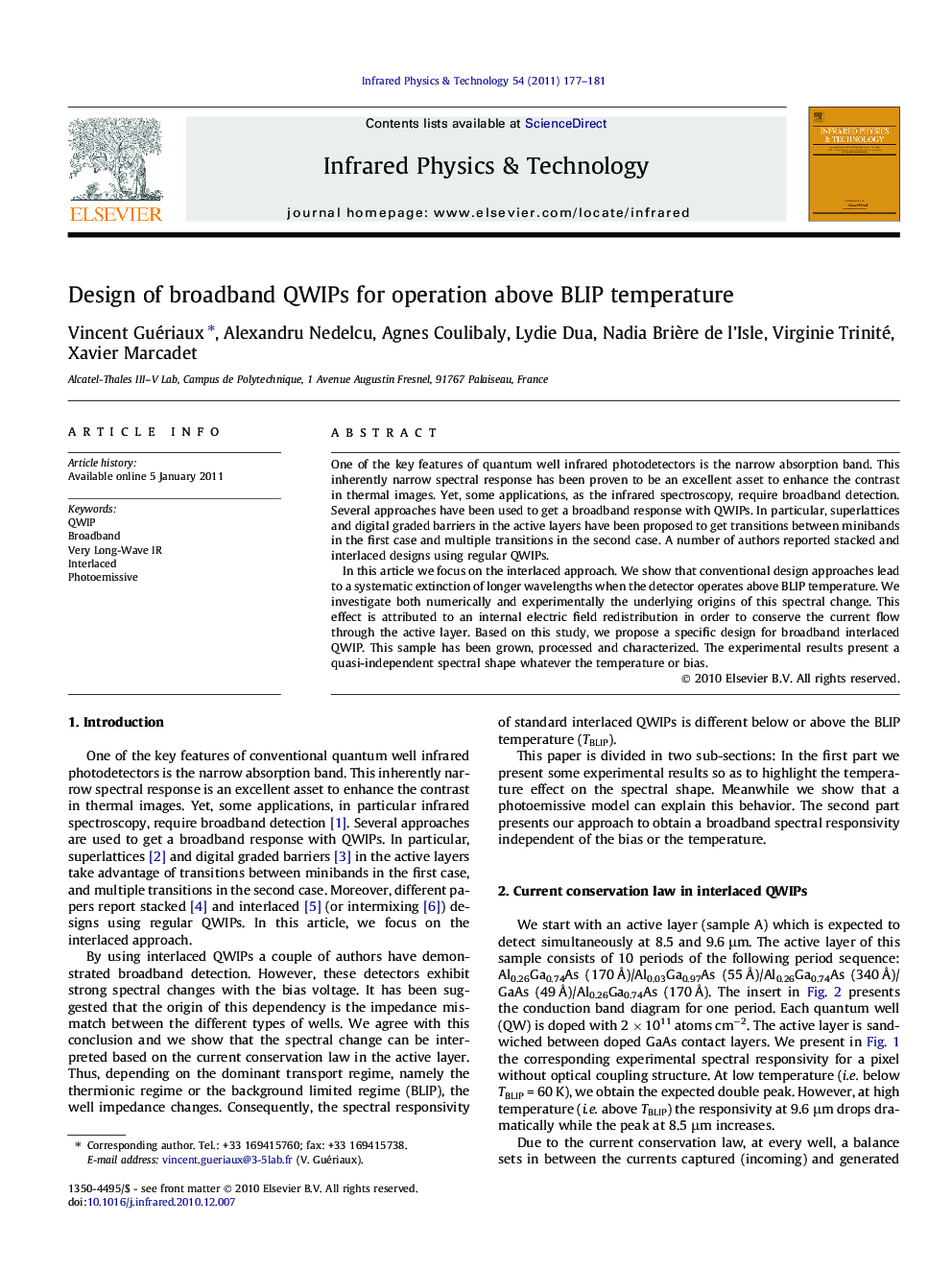| کد مقاله | کد نشریه | سال انتشار | مقاله انگلیسی | نسخه تمام متن |
|---|---|---|---|---|
| 1784723 | 1023275 | 2011 | 5 صفحه PDF | دانلود رایگان |

One of the key features of quantum well infrared photodetectors is the narrow absorption band. This inherently narrow spectral response has been proven to be an excellent asset to enhance the contrast in thermal images. Yet, some applications, as the infrared spectroscopy, require broadband detection. Several approaches have been used to get a broadband response with QWIPs. In particular, superlattices and digital graded barriers in the active layers have been proposed to get transitions between minibands in the first case and multiple transitions in the second case. A number of authors reported stacked and interlaced designs using regular QWIPs.In this article we focus on the interlaced approach. We show that conventional design approaches lead to a systematic extinction of longer wavelengths when the detector operates above BLIP temperature. We investigate both numerically and experimentally the underlying origins of this spectral change. This effect is attributed to an internal electric field redistribution in order to conserve the current flow through the active layer. Based on this study, we propose a specific design for broadband interlaced QWIP. This sample has been grown, processed and characterized. The experimental results present a quasi-independent spectral shape whatever the temperature or bias.
Journal: Infrared Physics & Technology - Volume 54, Issue 3, May 2011, Pages 177–181